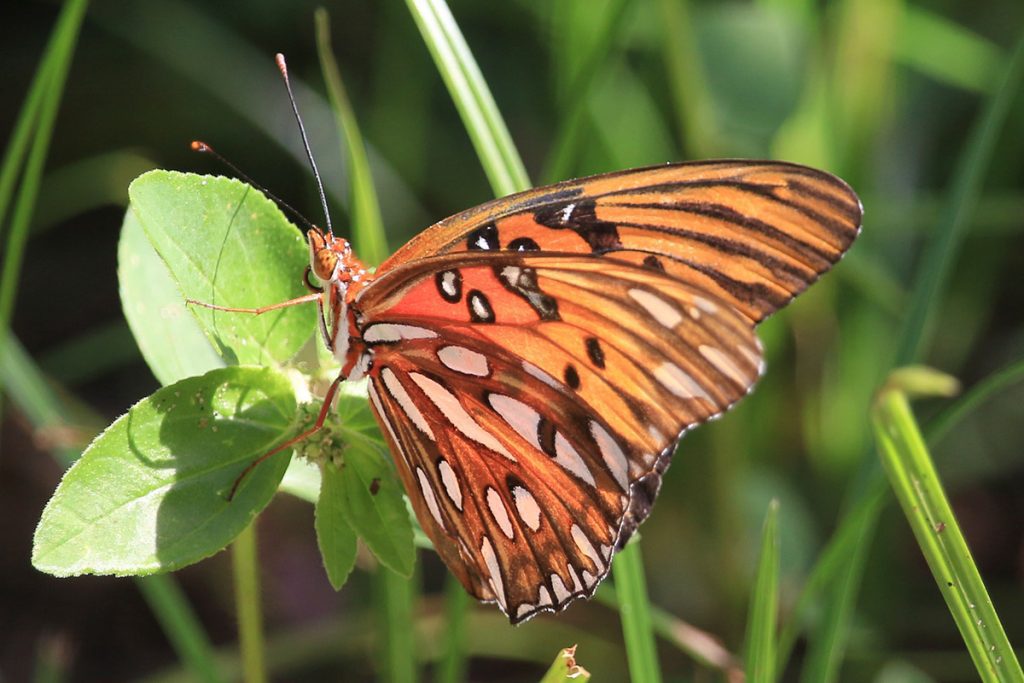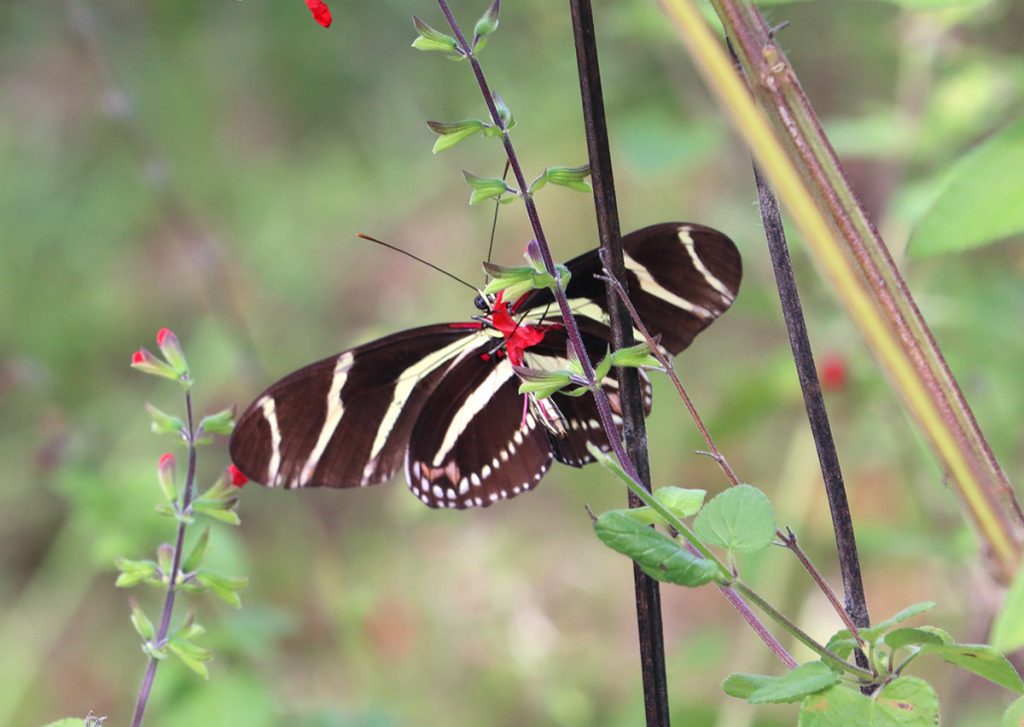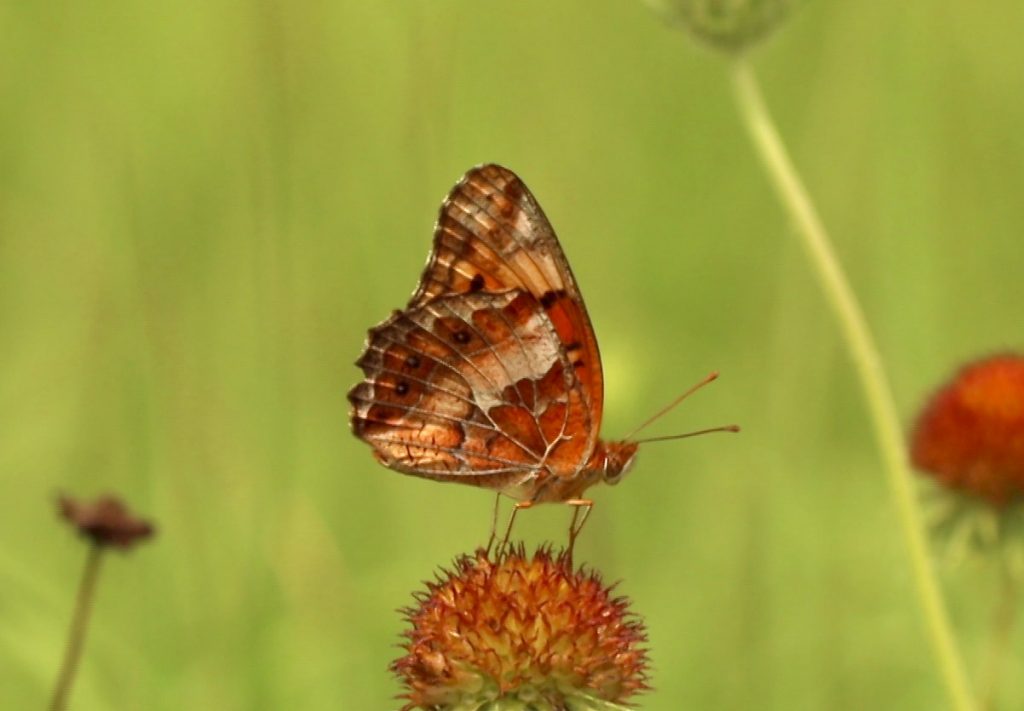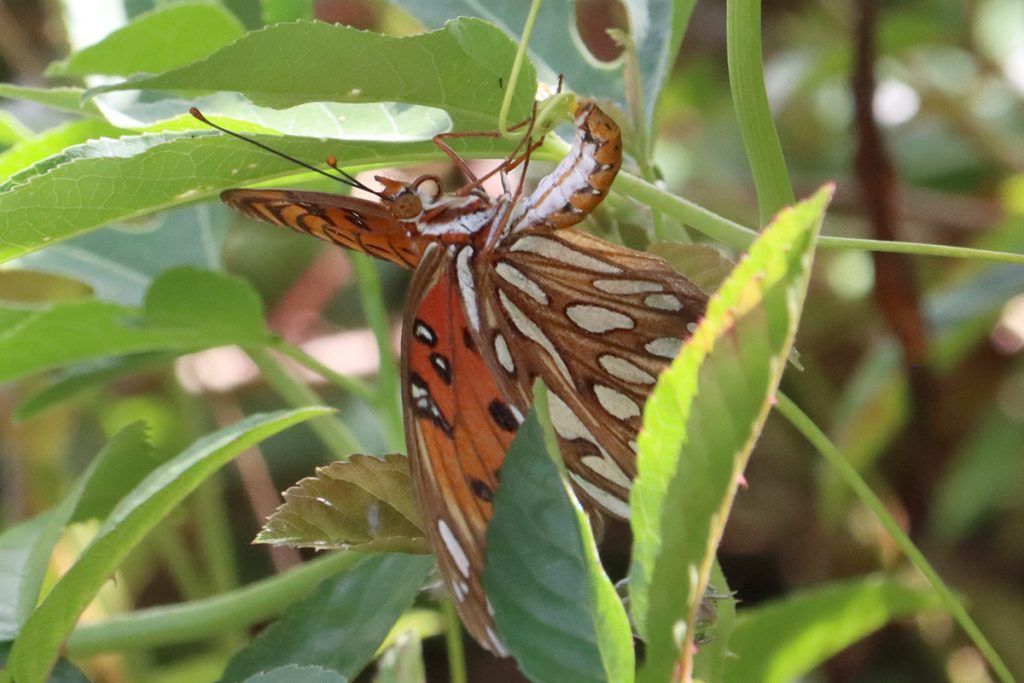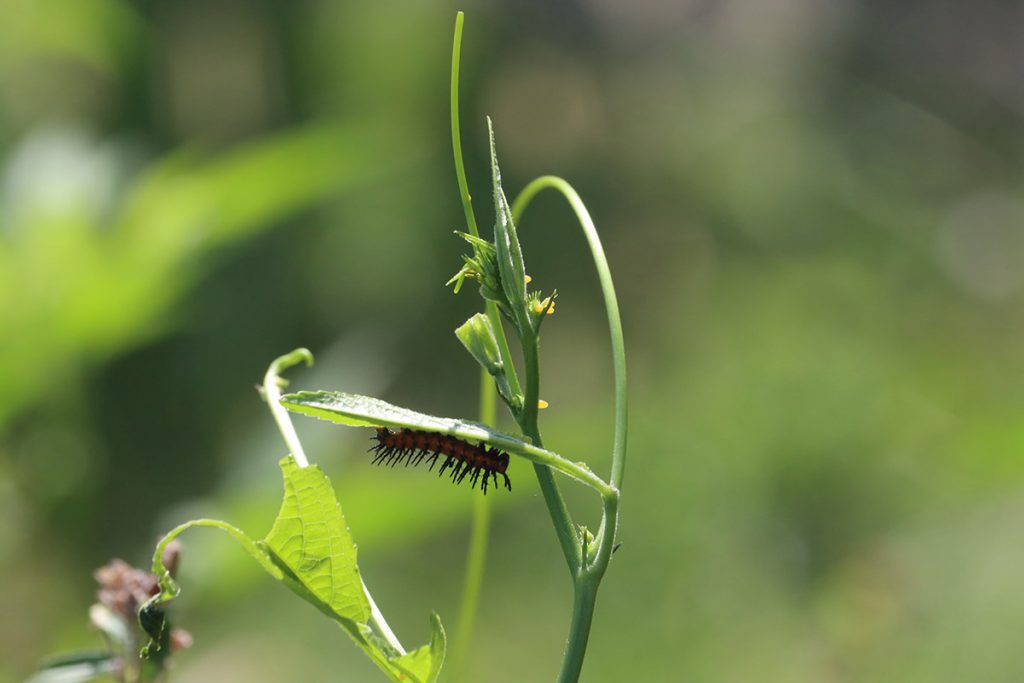It took the death of an oak for me to start raising gulf fritillaries. My yard is small and much of it is paved, so I have limited garden space. I had been wanting to plant passionvine, but heard that it could spread far, and unpredictably. Where would I make space for it?
Then, last June, our laurel oak fell over. Onto both of our cars. When we had it removed, I paid extra to have the stump ground. For months, Amy and I pondered and debated over how to replace this shade tree. I let things grow, and we soon had a hedge of native shrubs around the stump area. It consisted of several fanpetals and beautyberry bushes, plenty of Bidens alba, some dog fennel, and a single pokeweed. I turned this into a pollinator space.
As one of the beautyberry bushes grew nice and large, I thought about something I’d noticed in parks around town; passionvine loves to grow on beautyberry. The shrub makes a good trellis for Muscadine grapes, too. Here, finally, was my chance to plant passionvine, and see some new caterpillars in the yard.
I planted vines on opposite sides of the large beautyberry. The vines grabbed it, and after a few months, met each other at its top. Then the fun began.
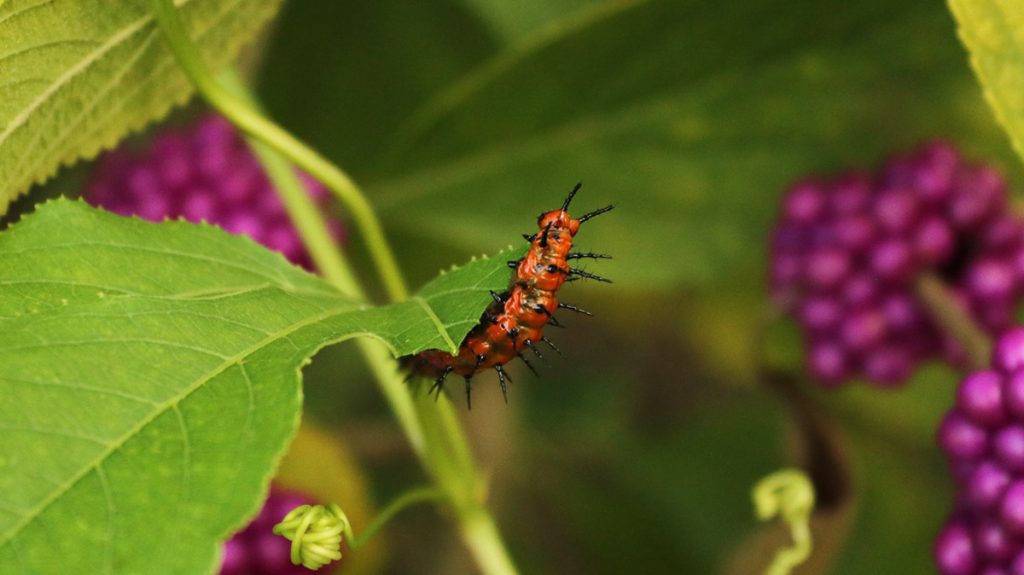
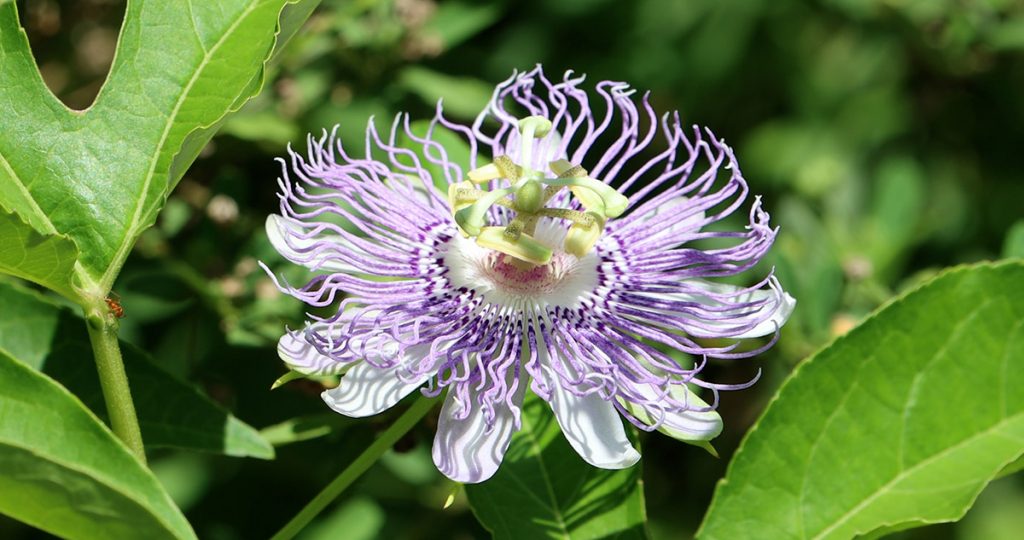
Purple Passionflower / Passionvine (Passiflora incarnata)
Other Florida native passionflower species available: Corkystem passionflower (Passiflora pallida), Yellow passionflower (Passiflora lutea).
In addition to feeding the caterpillars of three different butterfly species, they produce these funky looking flowers for other pollinators. Their fruit is human edible, known popularly as maypops.
Mating and Egg Laying
One day I saw an egg on a passionflower leaf, and soon a couple of small caterpillars. Then it got out of hand, with gulf fritillary butterflies laying eggs daily, and mating in the garden almost daily. I wanted gulf fritillary caterpillars, and now I had so, so many.
Butterflies will often rest in trees or tall shrubs when mating. This dog fennel is over seven feet tall:
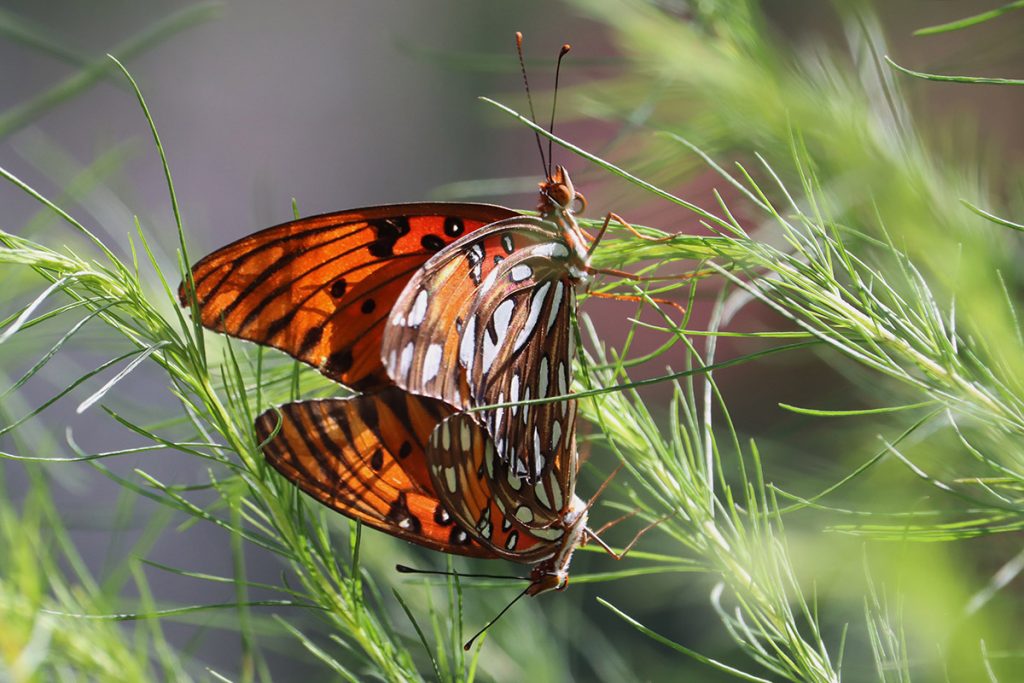
One of the first things I noticed was that mom didn’t always lay eggs directly on the passionvine. The vine snaked through fanpetals and beautyberry, which as often as not, received eggs. I looked it up and it’s common for them to do this.
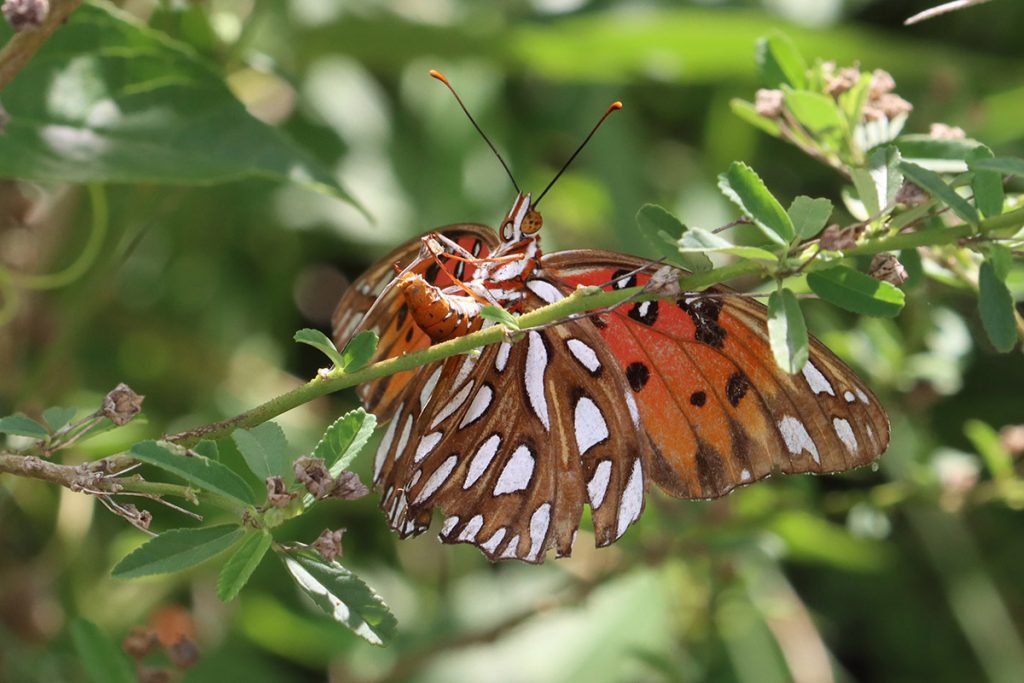
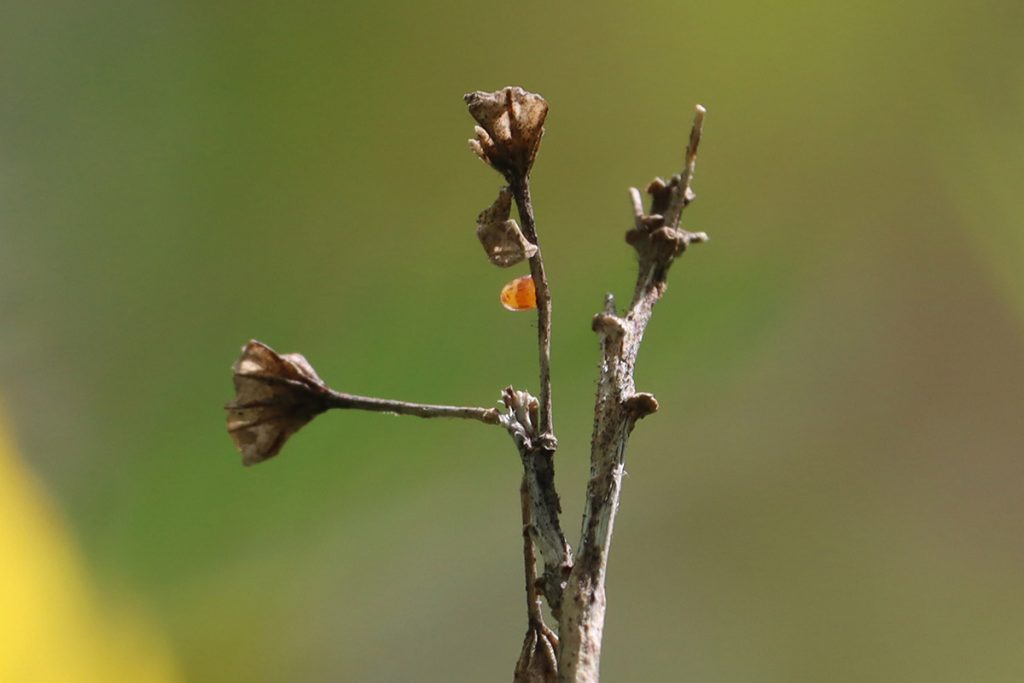
They also lay eggs on the tops and bottoms of leaves, the vine tendrils, or on the growing tip.
The eggs start out bright yellow/ orange, which look much like zebra longwing eggs. Passionvine hosts gulf fritillary, variegated fritillary, and zebra longwing caterpillars. Variegated fritillaries have whitish/ green eggs.
The eggs darken as they grow transparent and the caterpillar fills the shell. After they hatch, you may see the empty egg shell, but caterpillars usually eat them. Often, the best way to find the very smallest, newly hatched caterpillars is to look for small holes in leaves.
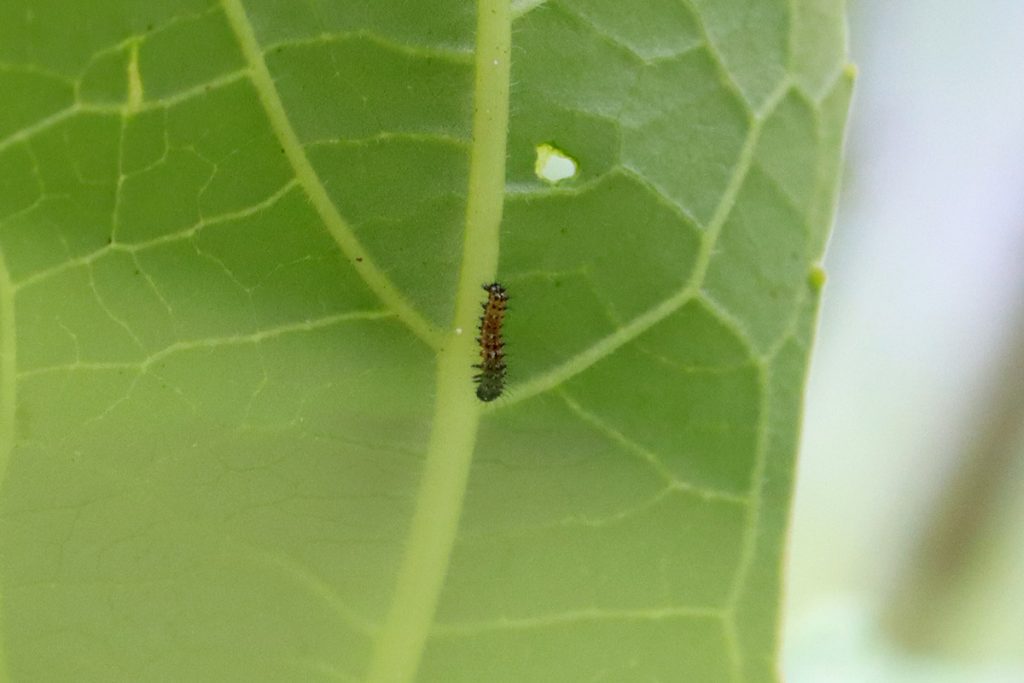
Early Instar Gulf Fritillary Caterpillars
Caterpillars often move under the cover of a leaf after hatching. If you see a small hole, take a peak under the tip of the leaf or at the stem before pinching to turn it. You don’t want to end your caterpillar adventure before it begins.
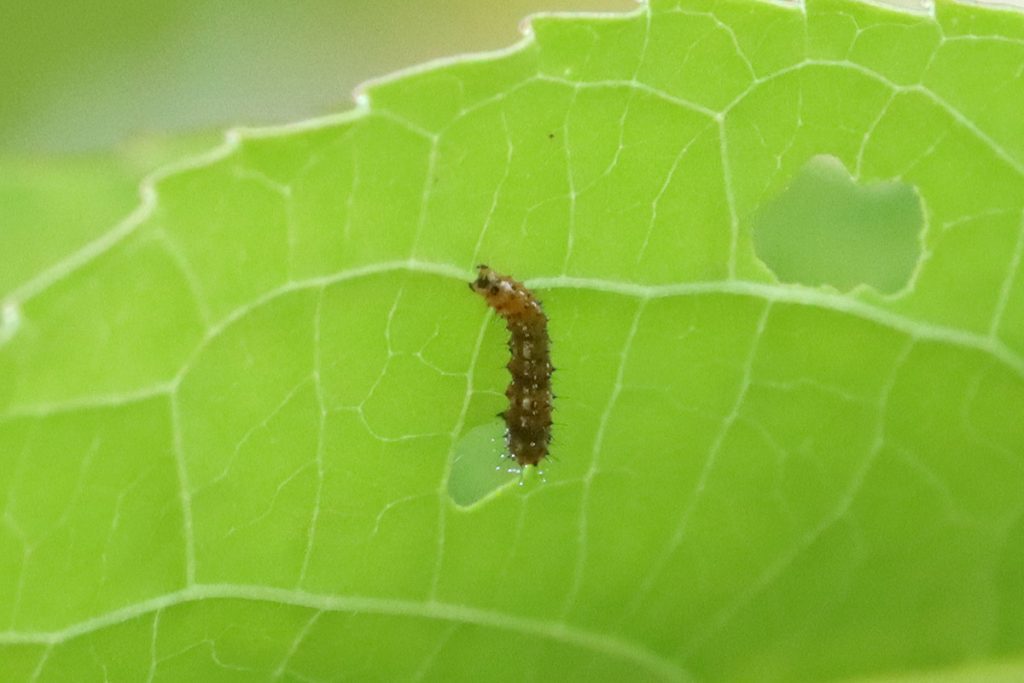
The younger caterpillars are, well… boring. They’re small and vulnerable, so they hide. You have to seek them out to see them. When it’s darker out, I sometimes shine a light up through the leaves to see if there are any dark spots on their undersides.
They also have very small stomachs, so they don’t eat much. In a week or so, you may find yourself mesmerized watching a larger cat decimate a leaf. But right now, they’re not so active.
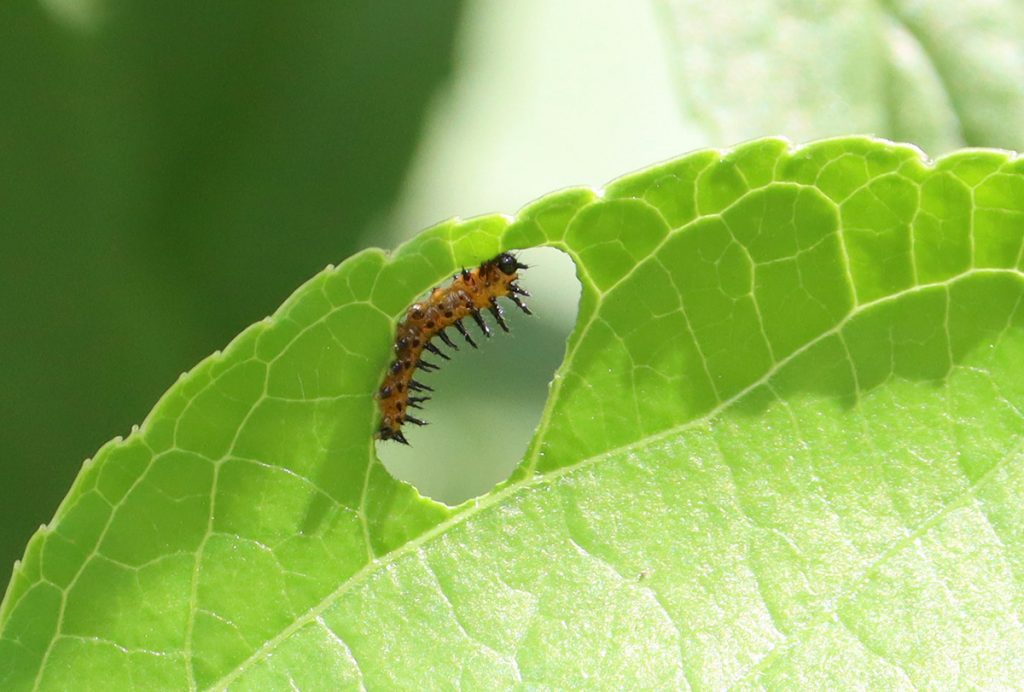
Over the next week and a half to two weeks, the caterpillar will progress through five instar phases. The bigger they get, the more active they become. Their stomachs are bigger, so they’ll need to eat more. Also, their spikes will emerge and get longer and sharper looking. They look more painful to eat, so they move about more in the open.
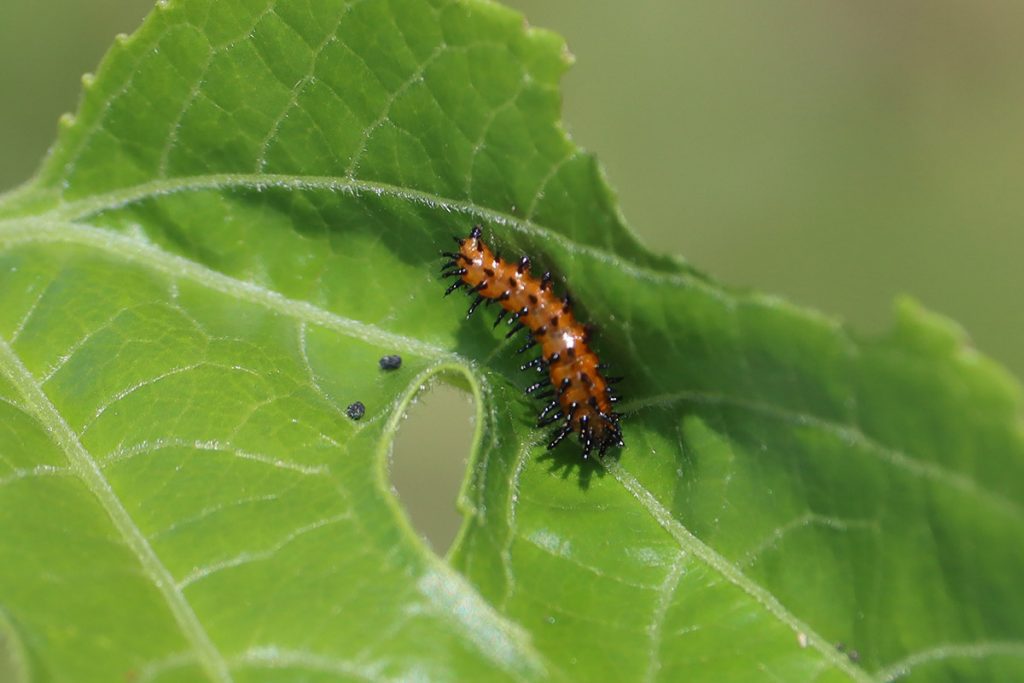
Read More: Feeding caterpillars in your north Florida Garden
- Raising monarch, black swallowtail, giant swallowtail, and longtailed skipper butterflies, with photos of every life stage.
- Raising gulf fritillary caterpillars (passion flower caterpillars), with photos of every life stage.
- Caterpillar supermarkets: a list of the wildflowers and trees/ shrubs that host the most moth and butterfly caterpillar species.
- A lot of insects are out to kill your monarch caterpillars. It’s a sign that your garden is healthy.
Bigger and Bigger- Later Instar Phases
The bigger the spikes, the more barbed they look. They are, in fact, non-stinging. But if you can’t hurt a predator, one survival strategy is to look like you can.
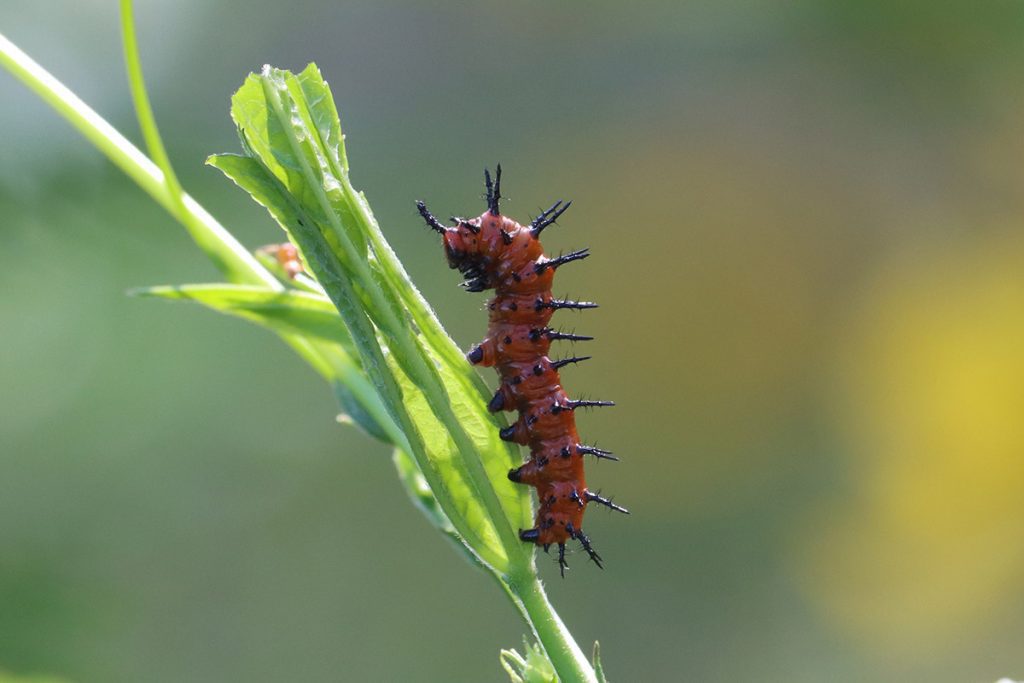
The larger they get, they glossier they look, and they develop dark stripes.
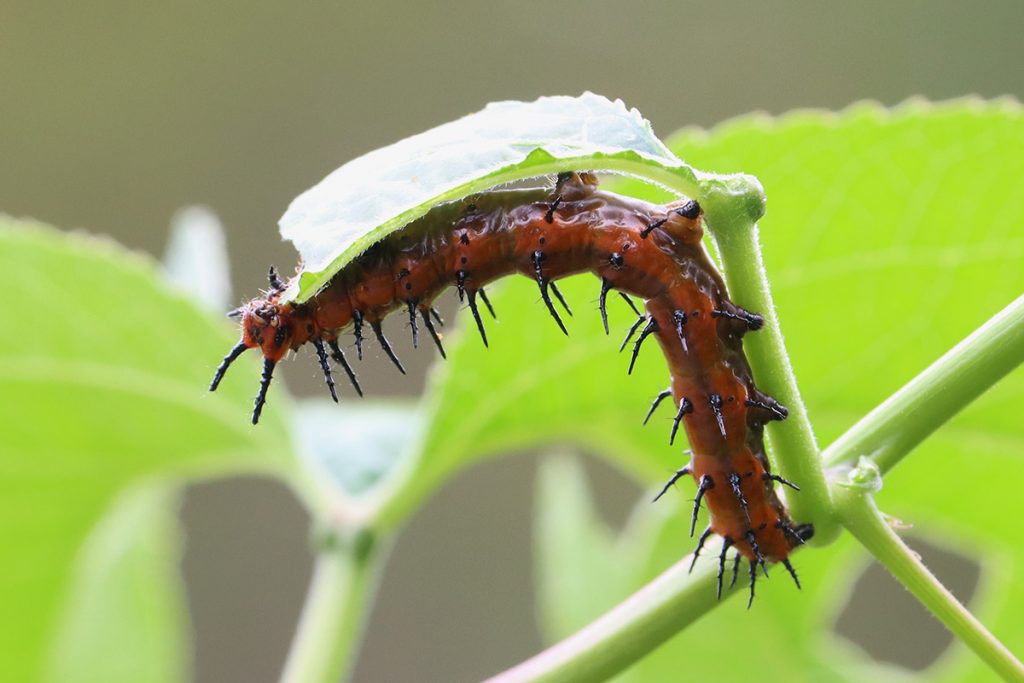
Just before they get ready to metamorphose, they get kind of bulky looking.
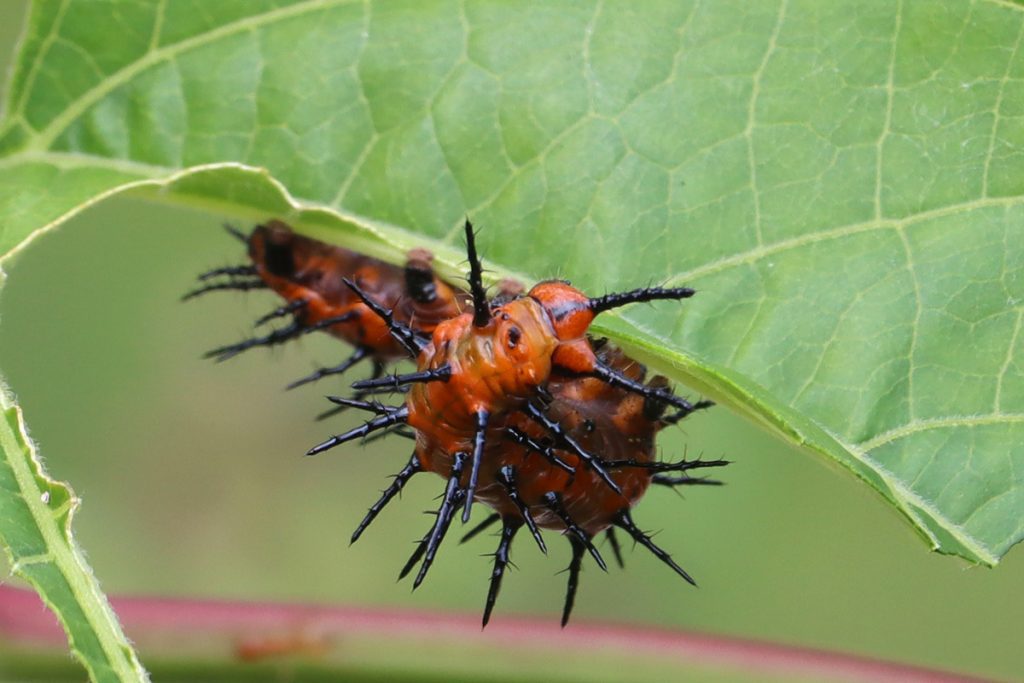
Making a Chrysalis
A few years ago, a couple of gulf fritillaries made chrysalises on our house. We didn’t have passionvine in our yard then, and I wasn’t sure which neighbor might. These caterpillars journeyed some distance to fix themselves onto our home.
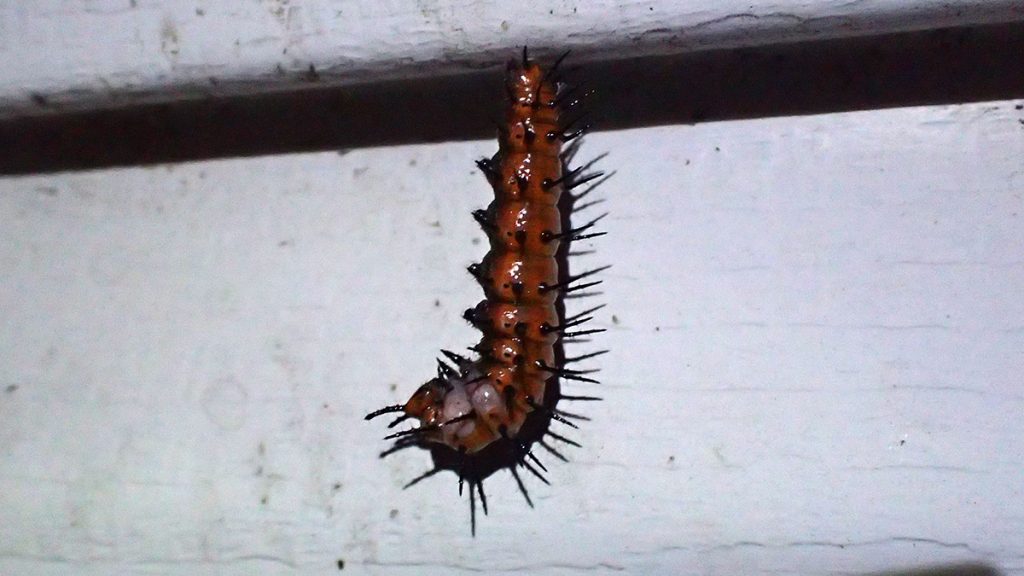
Knowing that they traveled to make their J, I picked a couple of the larger cats and put them in our enclosure to film them. The longer they hang, the whiter they become.
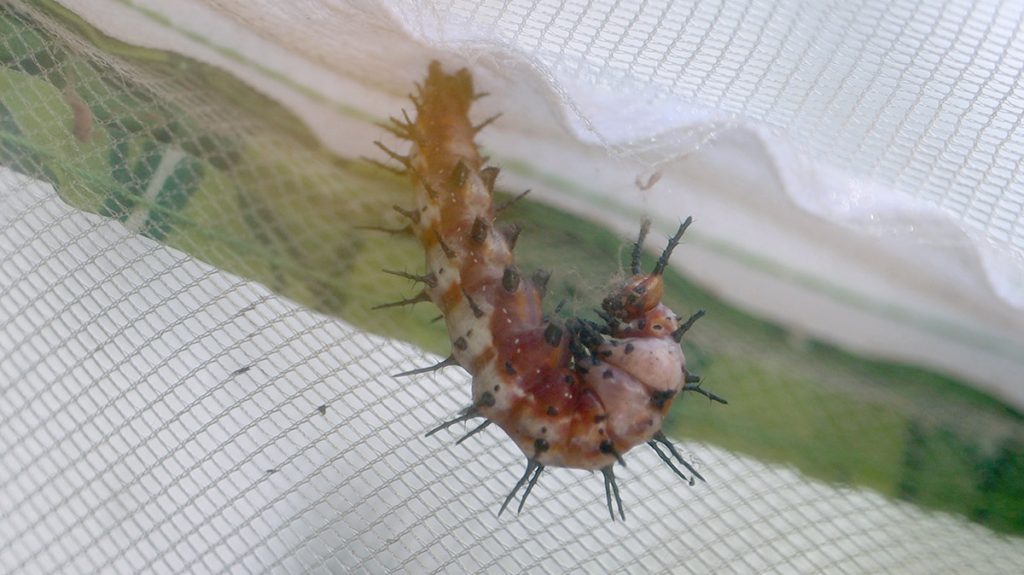
I had two caterpillars in the enclosure, and the one above made its J first. The other one circled and bumped it a few times, causing it to thrash in defense. Years ago, when filming black swallowtails, I saw a caterpillar kill another it its J. So I was weary. In this case, it was nothing more than an annoyance; both caterpillars successfully became butterflies.
Finally, it shook off its skin and:
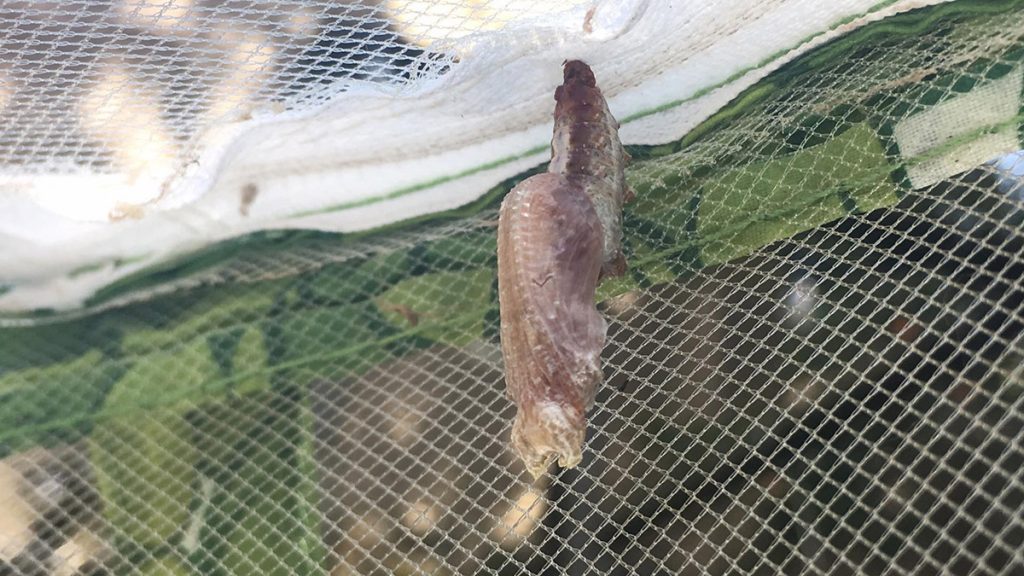
Keeping Caterpillars and Chrysalises in an Enclosure
I’ve strayed away from raising caterpillars in an enclosure. Part of the reason is research I read (and wrote about) on raising monarchs in captivity. Researchers found that captive bred monarchs were smaller and weaker overall than their wild counterparts. This may be because sheltering monarchs from predators and other dangers keeps natural selection from thinning the gene pool. In your garden as in the forest, winners win and pass on their winning genes.
Letting butterflies do their thing in the garden ecosystem is best for their species and the ecosystem. If you do chose to bring them into an enclosure, keep them fed, keep predators out, and keep the enclosure clean.
I only moved the gulf fritillary caterpillars into the enclosure close to their transformation, but if you want to raise smaller caterpillars, they’ll need a bit of food. I haven’t had luck keeping cuttings from wilting after a while, but maybe you have better skills with cuttings than I do. Instead, I prefer potted larval food plants that fit in the enclosure.
Once they make their chrysalids, keep an eye on them. They’ll take anywhere from a week and a half to two weeks to eclose. This typically happens in the morning. Let the butterflies hang out and dry their wings for an hour or two.
We usually have the kids open the enclosure, instructing them to take a step back and let them fly out.
A lot of times, the new butterflies are in no hurry to get out into the world. Both Max and Xavi have been able to put their hand in front of a butterfly that’s walking on the mesh, and have it climb on them. They then raise the butterfly out of the enclosure and let it fly off when it’s ready.
Random Notes on Raising Gulf Fritillaries
Caterpillars are a part of the food web
For the first few weeks after gulf fritillaries started laying eggs in our garden, we consistently had several caterpillars. But then, even though butterflies kept laying eggs, I stopped seeing caterpillars. There must have been some increase in predation, but why?
I figure it has something to do with our dotted horsemint blooming nearby. Once it takes off- usually Late July through August- our yard swarms with wasps. Adult wasps are pollinators, and many species love the horsemint. Their larvae, however, eat insects, and wasps are always carrying off caterpillars to take back to their nests.
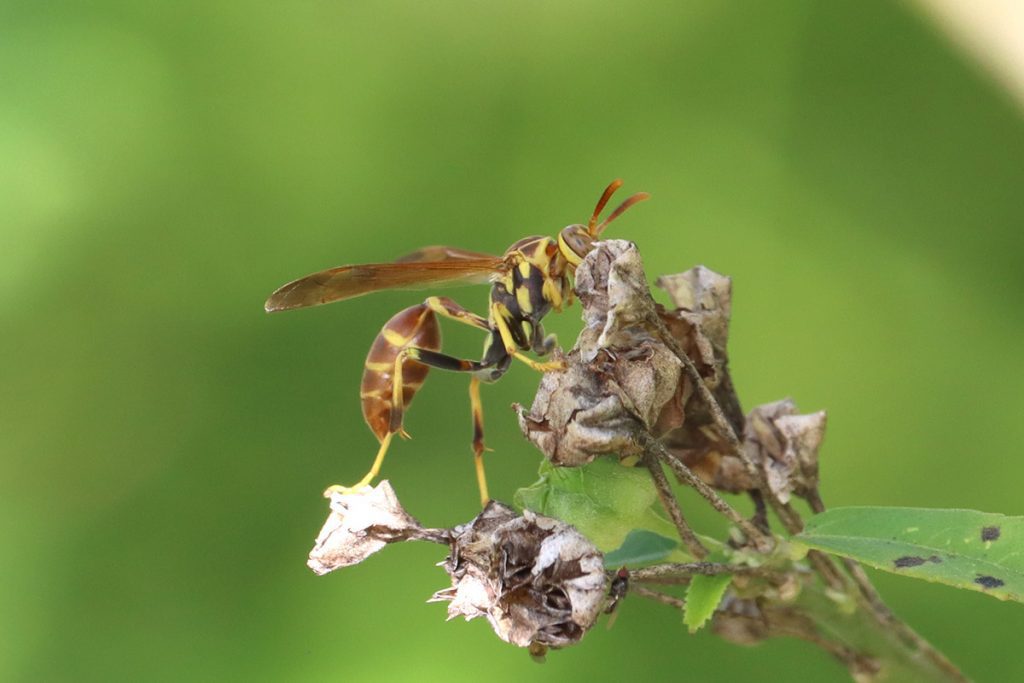
I don’t love seeing caterpillars get eaten, but I do realize that a single butterfly lays dozens of eggs. If two survive, they’ve replace their parents and maintain a stable population. The rest become part of the food web, feeding predatory insects, spiders, birds, lizards, and so on, and indirectly the larger animals that eat those predators.
Of course, there could be something else eating them or otherwise affecting them. I’ll keep watching.
Gulf Fritillary Butterflies Don’t Overwinter
We live in a place that’s warm most of the year, but which does reach freezing temperatures at some point during most winters. Insects, for the most part, don’t do well in the cold, so they do one of two things to survive.
Many insects find a place to hide for the winter. Some do this as adults, but others die off by the end of the year and leave larvae, eggs, or pupae tucked away somewhere. A common overwintering habitat is in our soil or leaf litter, an important reason to let leaves lie in the winter.
Swallowtail butterflies are among the butterflies whose chrysalids overwinter hidden away. Others, like gulf fritillaries, zebra longwings, long-tailed skippers, and cloudless sulfurs move north or south as temperatures rise and fall.
We Have One Zebra Longwing Caterpillar
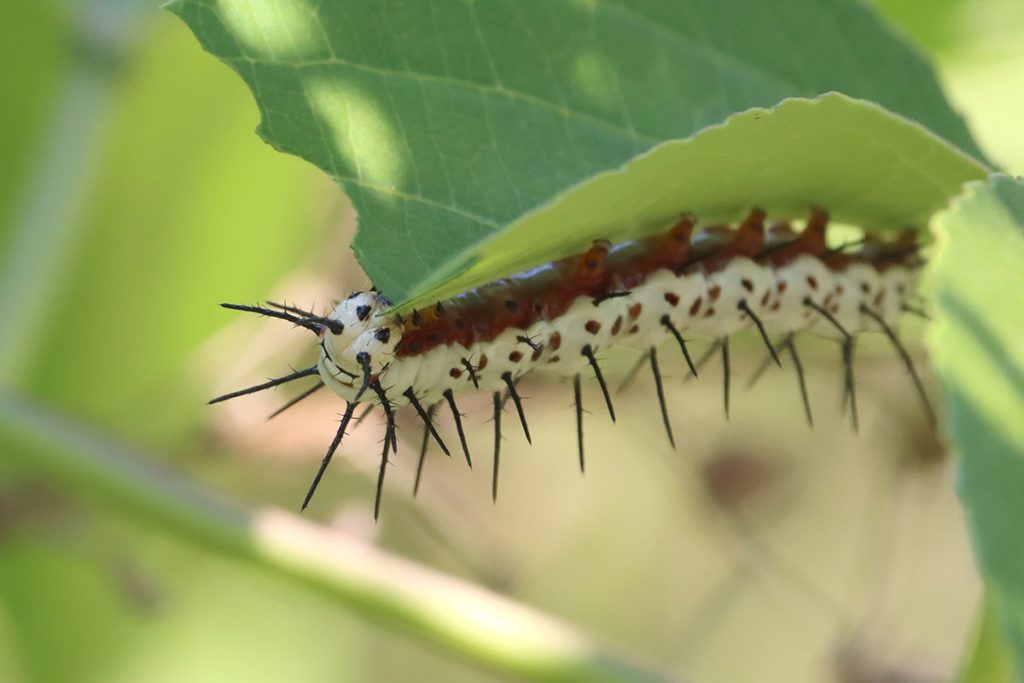
After I stopped seeing gulf fritillary caterpillars (despite all the egg laying), I found I had a single zebra longwing caterpillar of a nice size. I’ll keep an eye, and a camera, on it. Hopefully there are more to come…
Edit 9/28/22- Yes, we did see QUITE A FEW MORE zebra longwing caterpillars, and butterflies as well!
Further Adventures with Caterpillars
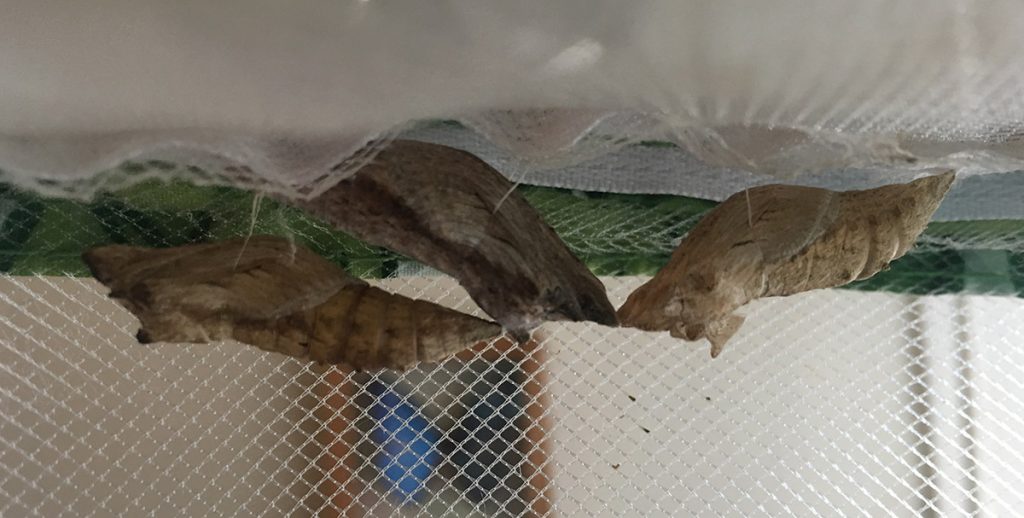
Four Butterflies You Can Easily Raise in North Florida
Monarchs, black swallowtails, longtailed skippers, and giant swallowtails are four species of butterfly that will come to your north Florida yard if you plant their larval food. Each is easy to observe even without putting them in an enclosure.
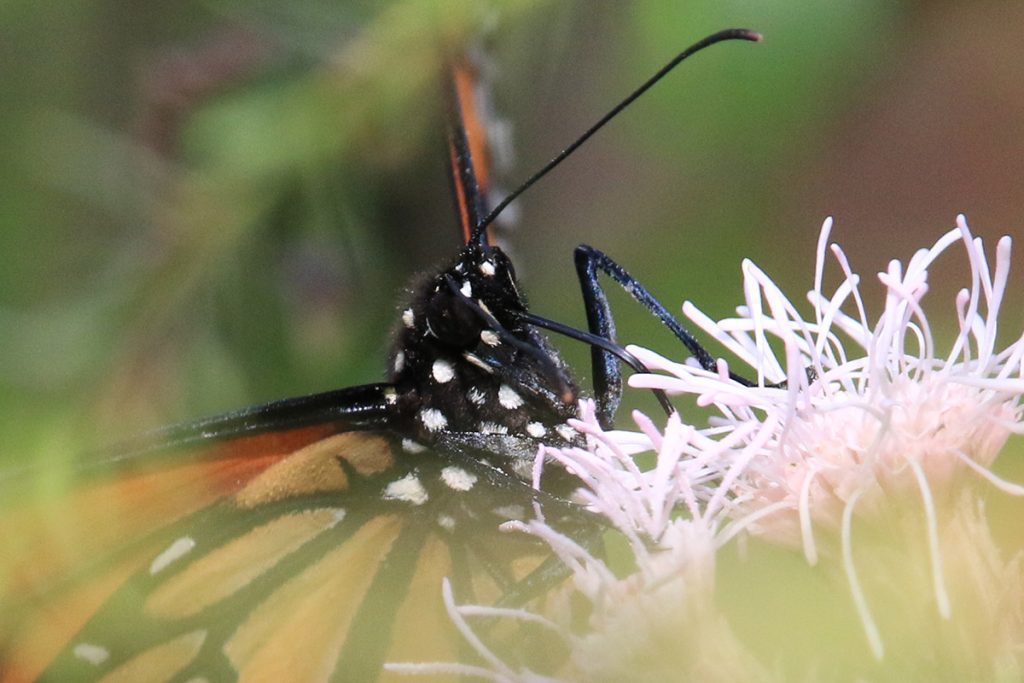
Dig Deeper into Backyard Ecology
What can we do to invite butterflies, birds, and other wildlife into our yards? And what about the flora and fauna that makes its way into our yards; the weeds, insects, and other critters that create the home ecosystem? WFSU Ecology Blog takes a closer look.
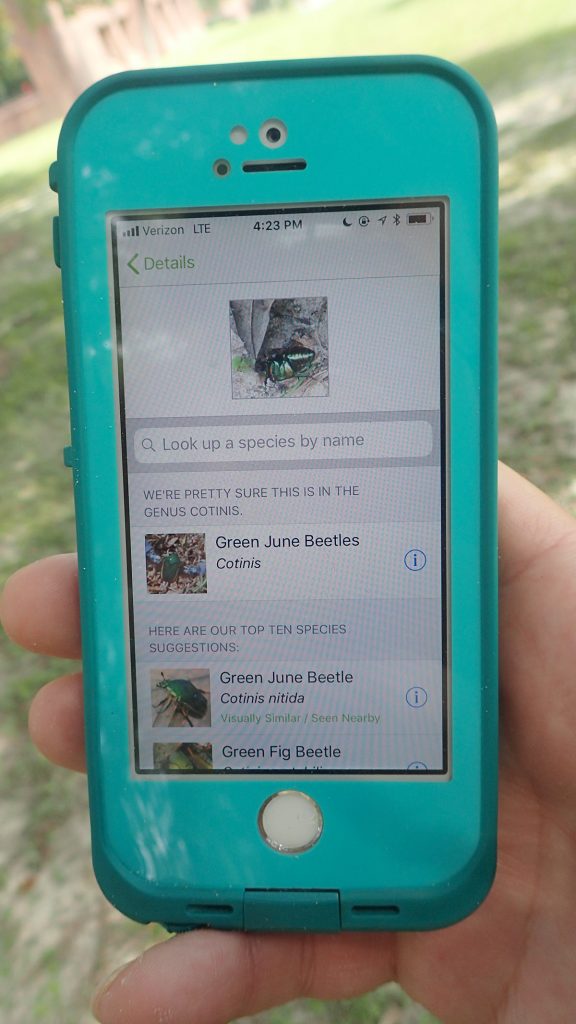
Apps and Citizen Science mentioned in the Backyard Blog
iNaturalist
Identify plants, animals, lichens, and fungi in your yard. Other users correct your identifications if you’re wrong, and even if they don’t, it can be a good springboard to further research.
Seek by iNaturalist
Instant identification, and it doesn’t record your location. This is a good option for kids with phones.
Monarch Larva Monitoring Project
Enter information about monarch caterpillars in your yard, and help researchers get a sense of the health of the monarch population that year, and how and when they’re migrating.
Great Sunflower Project
Record the number of pollinators visiting your flowers, and help researchers map pollinator activity across the country.

